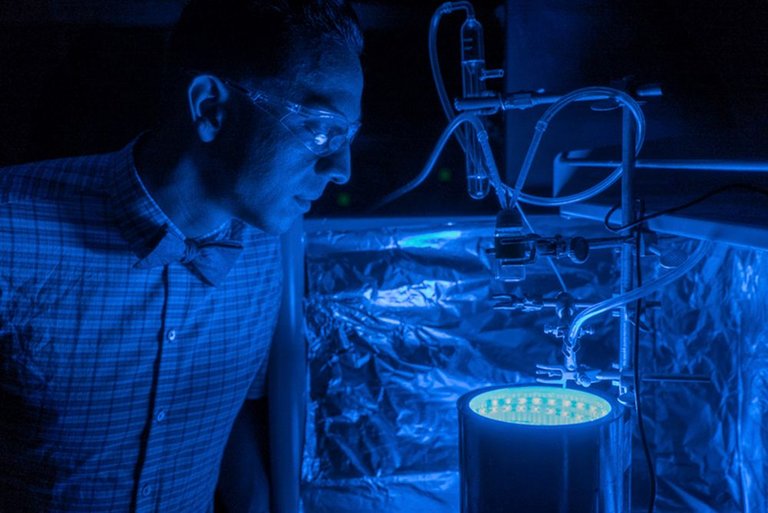Researchers in Florida have come up with an artificial form of photosynthesis that not only reduces carbon dioxide levels in the atmosphere, but at the same time provides solar energy. The new technology can be installed next to a polluting industry or on the roofs of homes to decontaminate the neighborhood and provide clean energy for the entire family.

A team of researchers has created an artificial form of photosynthesis that could reduce levels of carbon dioxide in the atmosphere and at the same time provide solar energy, according to the University of Central Florida in a statement.
In an article published in the journal Chemistry Journal of Materials, the researchers point out that they have obtained a new material that replicates photosynthesis to generate clean energy and reduce the levels of CO2 in the atmosphere.
The new technology is based on the fact that solar energy can be captured and stored directly in the chemical bonds of a material, or "fuel", and then be used when necessary. These chemical fuels are called solar fuels.
What these researchers have done is to trigger a chemical reaction in a synthetic material called a metal-organic framework (MOF) to decompose CO2 into organic materials that can be used as solar fuel.
The chemical reaction in the MOF was achieved using a blue light that imitates the wavelength of sunlight and converts carbon dioxide into forms that can be used as a source of clean energy. This process, similar to natural photosynthesis, thus converts light energy into chemical energy.
"The making of materials that absorb a specific color of light is very difficult from the scientific point of view, but from the social point of view we have contributed to the development of a technology that can help reduce greenhouse gases," he explains. One of the researchers, Fernando Uribe-Romo.
Isolating the "good" light in the visible spectrum to trigger a specific chemical reaction is somewhat delicate to achieve and materials that can absorb visible light tend to be very rare and expensive for building machines capable of replicating artificial photosynthesis.
To achieve the result, which overcomes these obstacles, researchers have combined titanium with organic molecules that act as small antennas that can absorb blue light. Thanks to this combination, CO2 impregnates organic molecules, while the antennas trap light and provide electrons that titanium oxide uses to convert CO2.
Tests carried out during the research in a tube equipped with blue lights (a blue LED photoreactor, a kind of tanning booth) showed that CO2 is trapped, while blue light provides the energy needed to convert it into solar fuel.
Great post, and good news for me, i like with science
Congratulations @ricardohd! You have completed some achievement on Steemit and have been rewarded with new badge(s) :
Click on any badge to view your own Board of Honnor on SteemitBoard.
For more information about SteemitBoard, click here
If you no longer want to receive notifications, reply to this comment with the word
STOPIf you want to support the SteemitBoard project, your upvote for this notification is welcome!